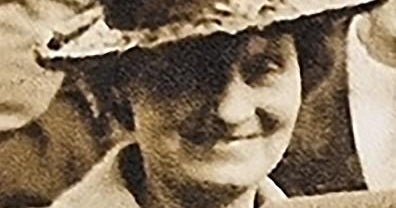How investigators tracked down Sarah Yarborough's killer
See how DNA helped solve the murder of 16-year-old Sarah Yarborough almost 30 years after the crime.
Where's Sarah Yarborough?
It was the morning of Saturday, Dec. 14, 1991, when 16-year-old Sarah Yarborough arrived early to drill team practice at Federal Way High School near Seattle, Washington. Later, when members of her team showed up, they saw that Sarah's car was in the parking lot. But Sarah was not there.
A 13-year-old witness
Drew Miller, who was just 13 years old at the time, lived down the street from the high school. He and a friend were going skateboarding that morning, and took a shortcut through the school grounds. That's when Miller says they noticed a mysterious man.
A man in the bushes
Miller says the man walked out of the bushes ahead of the boys. Miller says they didn't think much of it at first. But then they came across a horrendous scene. There in the bushes, where the man had just been, was the body of a young woman. It was Sarah Yarborough.
The crime scene
Sarah's body was found about 300 feet away from her car. She was partially dressed, and a pile of her clothing lay in the grass nearby.
Sketches of the suspect
Miller and his friend worked with police to create sketches of the man they saw at Sarah's crime scene. The sketches were then released to the public and posted all around the Federal Way area.
A case gone cold
Investigators found the killer's DNA on several items of Sarah's clothing that were at the crime scene. As a result, they had a full male DNA profile of the suspect. Family and friends thought they would find Sarah's killer quickly. But as weeks stretched into months, then years, there was no match.
The beginnings of DNA technology
By the early 2000s, investigators had received and looked into over 3,000 leads. They entered the DNA from the crime scene into the recently established CODIS system – a national DNA database that includes profiles of convicted offenders. But as the years went by, there was still no match.
Taking a chance on forensic genetic genealogy
In 2011, investigators reached out to Colleen Fitzpatrick to inquire about using forensic genetic genealogy to help come up with a possible suspect. Forensic genetic genealogy is the practice of using software to compare unknown DNA profiles to information from public DNA databases and searching family trees to identify suspects.
A break in the case
In 2011, 20 years after Sarah's murder, Fitzpatrick traced Sarah's killer's family tree back to a man named Robert Fuller, whose family had come to America on the Mayflower. Fitzpatrick says it felt hopeful, as it was the first break in the case in 20 years.
After eight years of DNA searching …
In September 2019, Fitzpatrick's team made a breakthrough. They came up with two new possible suspects: brothers Edward and Patrick Nicholas, who as the DNA showed, were descendants of Robert Fuller. Edward's DNA profile was already in the CODIS database, and wasn't a match.
A suspect
Investigators then zeroed in on Patrick Nicholas. Detectives discovered that around the time of Sarah Yarborough's murder, Nicholas had often taken a bus route that went past Federal Way High School. Back then, Nicholas was 27 years old and is seen here in a booking photo from a few years after.
A plan to capture Patrick Nicholas' DNA
Undercover detectives followed Patrick Nicholas to a laundromat. They watched him go outside and smoke two cigarettes. Nicholas dropped the two cigarette butts and a napkin. Undercover detectives collected them for DNA testing.
A DNA match
All three items were rushed to a crime lab and within days, detectives received the call they had been waiting for. The DNA from the cigarette butts matched the DNA found at the Yarborough crime scene.
Unraveling Patrick Nicholas' criminal history
Patrick Nicholas was arrested and charged with Sarah Yarborough's murder. His previous criminal record included five sexual assaults that investigators knew of, none of which had required him to submit his DNA. Therefore, there was no record of him in the CODIS database.
Evidence revealed at trial
In the spring of 2023, Patrick Nicholas went on trial for the murder of Sarah Yarborough. Prosecutors revealed evidence found during a search of Nicholas' home around the time of his arrest. This included a torn photograph from a magazine of a woman in a cheerleading outfit.
Another piece of evidence
In searching Nicholas' home, detectives also found a newspaper from 1994 that had on its front page an article about the Sarah Yarborough case.
The verdict
On May 10, 2023, Patrick Nicholas was found guilty of first-degree murder and second-degree murder. The jury decided both had been committed with a sexual motivation.
Patrick Nicholas sentenced
At Nicholas' sentencing hearing two weeks after his conviction, Sarah's Yarborough's family and friends took to the podium to say all that Patrick Nicholas had taken from them. Nicholas received a sentence of almost 46 years.
Sarah Yarborough, never forgotten
The trial brought Sarah Yarborough's friends and family together. They say Sarah left a legacy of love and she will never be forgotten.





















